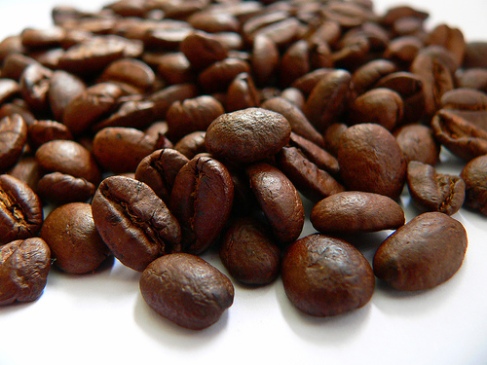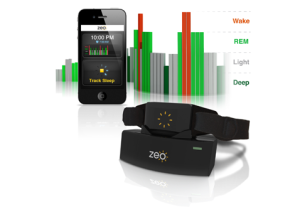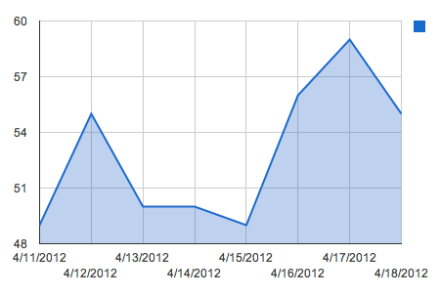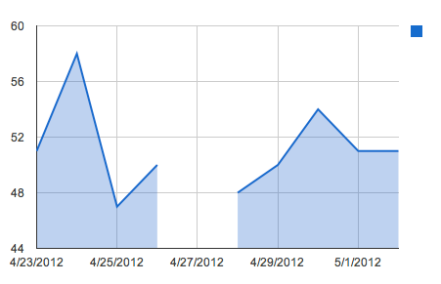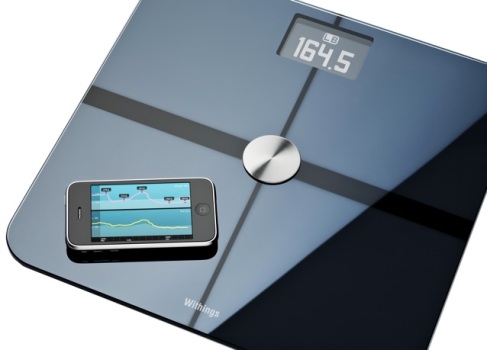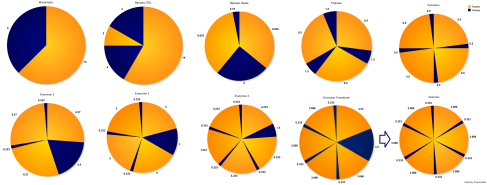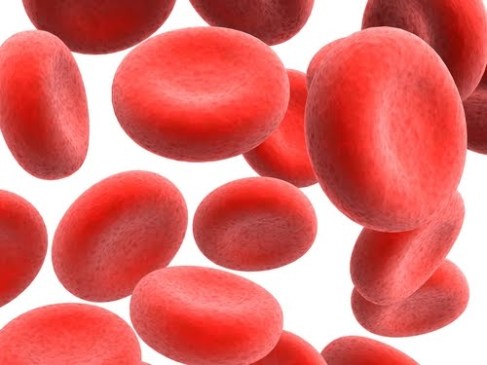This is a fascinating post over on the NY Times:
Using data drawn from queries entered into Google, Microsoft and Yahoo search engines, scientists at Microsoft, Stanford and Columbia University have for the first time been able to detect evidence of unreported prescription drug side effects before they were found by the Food and Drug Administration’s warning system.
Using search logs to mine for this information is a fascinating idea.
No if only more researchers had access to this data and it wasn’t kept behind a walled garden.
I found out this morning that Aaron Swartz passed away yesterday.
My condolences to his family, friends, and colleagues.
I was Aaron’s friend (though we haven’t talked in about 5 years), collegue, and collaborator on a number of technologies including RSS 1.0.
For some perspective on how Aaron impacted mine – his work on RSS 1.0 and Atom were used to drive the last three companies I started as well as my current company.
He even created a parody of RSS 1.0 named RSS 3.0 to which I commented “RSS 3.0 is easier than sexp” (which is obviously a geek joke).
I know this is kind of a hacker perspective but his work has constantly been part of my life for the last ten years.
Cory Doctorow, Lawrence Lessig, Accordion Guy and others have added some color to this story as well as the NY Times.
Instead, I’d like to cover how Aaron impacted the world of open data from a hacker’s perspective and his impact on my life.
I first met Aaron when he was 15. At the time we were working on RSS 1.0 and I really had no idea how young he was.
Soon after we met after he started staying with Lisa Rein while he was living in San Francisco.
At one point, Cory, Lisa, Aaron, and I went out for lunch after a protest against the Iraq war.
At the time, RSS and blogs were just really a hobby and weren’t really as ubiquitious as they would become.
I remember Aaron being both brilliant, clever, funny, and sometimes stubborn (often stubborn to be honest).
Not necessarily stubborn in a bad way but more “this is wrong, we have to fix it” manner.
Aaron’s contribution to XML, RDF, and RSS was really vital to the growth of the Internet at the time.
This was before Facebook, before Twitter, etc.
These formats would eventually be used by Blogger, Moveable Type, etc which really helped open up the concept of ‘open data’ and illustrate the potential for citizen powered media.
Eventually the founders of Blogger would go on and start Twitter and Facebook would use the ‘newsfeed’ concept to build a billion dollar company.
Part of the reason I liked Aaron is that he was just like I was – though ten years earlier.
I was the stubborn kid. I was the geek who loved the Internet. I was the one who would stubbornly fight against the adults and their corrupt view of the world.
I never really told him that I saw echoes of myself in his personality and his behavior.
When you’re 15 you have all the answers. The world is broken and you’re the only one who can fix it.
He was just as passionate about open data as I was. It was just the right thing to do.
The Internet should be open. Formats should be open. Journals should be open. Research should be open. The web should be open. Our legal system should be open. Everything should be open!
He had an uncompromising vision of the world which we need more of in the tech industry . We need more AaronSW’s … not less.
I do have to admit that personally I’m saddened to see my friends compromise their ethics when they are given an opportunity to sell out their belief in open systems and instead work for a company which is about to IPO.
Aaron’s uncompromising attitude is amazingly powerful but sometimes when the world doesn’t go your way it’s easy to get frustrated.
“The reasonable man adapts himself to the world; the unreasonable man persists in trying to adapt the world to himself. Therefore all progress depends on the unreasonable man.”
– George Bernard Shaw
The problem is that being the unreasonable man isn’t easy.
It appears that the US government decided that Aaron’s actions to liberate JSTOR means that he was a terrorist – and they would prosecute him and make him face difficult consequences for his actions.
I’m just going to assume that this was one of the major factors in his decision.
I do have to admit that while I appreciate what Aaron was trying to accomplish that perhaps he could have gone about it in a better and cleaner manner.
But even if the government’s charges WERE accurate – it’s really just trespassing. Make Aaron do 6 months of community service. This isn’t a felony. You don’t have to destroy his life.
Felons who face rape or weapons charges often face less time. Banksters who rob billions from our economy get slapped on the wrist.
Yet someone who is trying to passionately change the world for the better faced 35 years in prison.
I realized early on that you can’t take the world too seriously. If you expect everything to go perfectly you’re going to have a hard time.
You win some. You lose some. It’s more important to win over the long term and have fun in the process.
Friends, love, life, travel. It all helps put things into perspective.
Like Cory, I’m not sure Aaron realized that he could have called any of us for help. I know I would have flown to New York immediately if I had known things were so bad.
I honestly expected the whole thing to blow over. Maybe Aaron would be found guilty but only serve a few months in prison. I though that the judge would just throw the whole case out.
I’m not sure why but humans seem to want to hide how fragile they really are. I wish sometimes we could just tell each other how much we appreciate their work and how they impact our lives. If we could just reach out and tell someone how important they are before we all sit down to write our eulogies.
I’d really to use this as a constructive moment. Aaron cared about open data. We should rescue his passion and drive forward in this area – if not for our sake then for his memory.

Aaron and I at a party circa 2002. Thanks to Joey deVilla for finding this picture.
Ongoing research is examining ways in which the incidence of DAF can be decreased, and suggests that exposure to the natural environment may aid in the reduction of DAF symptoms. A number of researchers have investigated Directed Attention Fatigue recently. Leading contributors includeRachel and Stephen Kaplan, environmental psychologists at the University of Michigan. Rachel and Stephen Kaplan are credited with much of the research relating to Directed Attention Fatigue and were the first to discover that extended periods of focused attention can lead to DAF. Their research suggests that Directed Attention Fatigue can be alleviated with exposure to nature. Together, the Kaplans devised the Attention restoration theory (ART), which states that a person is better able to maintain focused directed attention after spending time in the natural environment.
A number of studies have been performed that specifically focus on Directed Attention Fatigue experienced by cancer patients. Such studies suggests that the DAF experienced by cancer patients following surgery improves significantly through outdoor restorative activities for 20 minutes per day.[12]
Similarly, it has been discovered that even brief amounts of time spent on a busy metropolitan street can affect one’s ability to maintain focus on a given task. Experimental findings suggest that spending time in a natural environment or even looking at pictures of nature can improve maintenance of directed attention.[13]
The Landscape and Human Health Laboratory (LHHL) has completed studies examining the complex relationship between people and their environment. Researchers here discovered the correlation between Directed Attention Fatigue, irritability and aggression. Their findings suggest that people deprived of the restorative effects of nature display more aggressive qualities. Results also demonstrate that communities with several trees and other natural areas tend to be stronger, safer and house residents with a higher attention level. More recent experimentation done at the LHHL suggests that children possessing attention deficits increase their attention level after walking outdoors.[14]
According to this and much other research that has been performed regarding Directed Attention Fatigue, the brain’s ability to maintain directed attention is heightened after exposure to nature.
It’s been about a week now since I’ve started re-introducing some caffeine back into my diet due to my ideas on hacking my caffeine stimulant metabolism.
I’ve made the following changes:
– no chocolate (except in my protein shake in the AM)
– caffeine ONLY in the AM.
– broccoli and sulforaphane supplementation.
I haven’t yet tried to isolate which one of these variables is now allowing me to take in caffeine and sleep less but the results have been dramatic.
I basically went from about 9 hours of sleep with Adderall XR and 20-30mg of caffeine to about 6.5 hours of sleep with just ~20mg of caffeine.
My regular sleep WITHOUT any caffeine is just about 6.5 hours so I think I’m going to see law of diminishing returns on this path if I try to optimize further.
I’m able to sleep within 1-2 minutes of going to bed as well.
In conclusion. I’ve gone from 9 hours of sleep down to 6.5 hours of sleep with the same level of productivity. No change in wakefulness. No change in gym recovery, etc.
The real test is whether I can sustain this for six months or so.
I’m declaring a new class of applications – hostageware.
Apps that you HAVE to use because there is no valid / realistic alternative but which are SO buggy and such crap that they drive you insane.
The Zeo is the archetype.
The Zeo has a myriad of problems which seem too numerous to enumerate in one blog post.
Regardless, I’ll try to name a few.
From a platform perspective, they’ve pushed the concept of the ‘ZQ’ to explain how solid your sleep was from the night before.
However, it’s a JOKE metric.
For example, my Zeo told me I had a ZQ of 61 and that I slept 5:26 minutes.
The previous night my Zeo told me I had a ZQ of 82.
Now I’ve been controlling my sleep TIGHTLY for the last week and I can tell you that LAST NIGHTs sleep was MUCH better than the previous night.
Why? Because I was training the previous day and had a lot of recovery to catch up on. All of my subjective measures (morning, mid, and evening wakefulness and creativity) were high and my performance was exemplary.
Getting LESS sleep and more efficient sleep is a GOOD thing and not a bad thing.
It’s been YEARS since this problem was exposed. This should have been corrected in version 1.1. Have they fixed it yet?
Nope.
Another example. Last night I Slept from 12:08AM until 6:50 AM. As printed on my Zeo and recorded by me before and after I slept.
Guess how many hours the Zeo says I slept. It thinks I only slept 5:26 minutes. Major discrepancy.
I’ve asked Zeo 3-4 times for an explanation here and I keep getting conflicting answers.
The only conclusion I have is that NO ONE within Zeo actually uses their product.
One could come to the conclusion that it’s the sleep version of a lie detector (AKA snake oil) and that I’m just observing placebo effect.
However, in my experience, the deep and REM measurements are somewhat accurate and valuable to my sleep hacking.
Every time the Zeo tells me that my REM and deep numbers are off, I notice correlated mid-day sleep pressure / drowsiness (which impacts my work).
So for now I’m stuck, trapped. Zeo is keeping me a hostage.
I’d drop them in a MINUTE if there was a viable alternative.
Update: Another good example of the use of the Zeo is the ‘time to Z’ which is the amount of time it took you to all asleep. As part of my hacking I have dramatically lowered my time to Z measure. Which is great, but it’s not 1 minute which is what it suggested last night. I was definitely mellow last night but I would say it was more like 5 minutes. It’s just hard for Zeo to be very reliable with one EEG sensor but then again they shouldn’t sell their product as BEING reliable.
For the last few weeks I’ve been performing orthostatic heart rate analysis to help detect when my body was in a state of fatigue from training too frequently.
I have found that I’m prone to hit the gym too much or not sleep enough. For some reason my body seems fine until I hit a wall.
Once I hit the wall I can have a BIG set back requiring significant sleep (>10
hours) and sometimes 1-2 days where I have to rest.
It also has a big impact psychologically as I want to control my fate and plan out my daily routine.
Yesterday was a burn out day. Just completely fatigued. Couldn’t complete my workout and this was also accompanied by cravings which meant I broke my diet.
To perform this analysis is easy.
Basically, you wake up, put on a heartrate monitor and then record your heart rate for 3 minutes. Then you stand up and measure the difference 15 seconds after you stand.
The difference between your peak and your mean is called your orthostatic measurement.
However, I’ve found that this isn’t valuable. It’s always the same.
What IS valuable is the mean resting heart rate. This does seem to vary.
I trim off the first minute of data, then take the 120 values from the 2nd and 3rd minute, and compute the mean.
This value DID tend to be higher on days where I trained the day before.
However, ONLY when I had lower blood pressure.
Part of this process identified that I have Postural Orthostatic Tachycardio Syndrome. Either that or I’m just very salt sensitive.
Either way it’s not an issues. If I have low blood pressure I just take in a bit of salt (1-2g) and 30-60 minutes later my blood pressure is higher. I can then maintain this over 3-4 days until I require some more salt.
I discarded the previous week of measurement data and started again.
However, when I ran the second set, other than an initial peak, the values were somewhat stable with a lower standard deviation.
If you ignore the fist peak (ignoring data in a scientific experiement isn’t always a good idea and can yield to cherry picking and confirmation bias), which I can’t really explain due to the following data, the standard deviation is lower and my trend is somewhat stable.
The stdev for the first series is 3.8 vs 2.2 for the second series.
First series showing more variability.
Second series showing less variability.
The main problem is that the most recent measurement did NOT predict that I was fatigued and that I would have a bad training day.
The first set of data did seem to correlate well with whether I had trained the day before.
But yesterday was a BAD burn out day and this analysis didn’t predict anything.
Conclusions
I’m not sure I have any had conclusions from this experiment just yet.
My thinking is that perhaps this analysis is indicative of the problem but not a strong predictor. If the heart rate just tends to be higher then one day where it was normal isn’t unusual.
I may have to use this metric along with another of other metrics to determine when to train or not.
The only problem is, that I didn’t have muscle soreness, lethargy, or any other symptoms until I got on my bike and was half way into my training session for the day.
Perhaps the only REAL way to solve this is to just build in FORCED rest days where even if I COULD train I force myself to rest anyway.
This would yield some inefficiency but would prevent burn out.
tl;dr. I figured out a way to hack the speed of my caffeine metabolism with Sulforaphane which induces the enzyme cytochrome. This means I should be albe to drink caffeine again!
I’ve had a problem with caffeine since I was about 25. My body would have problems sleeping after consuming caffine in the morning.
I ended up needing to sleep up to 9 hours per night – which is no fun.
Fast forward to 2011 when I paid 23andme to sequence my genenome.
I find out that I have Genotype CC for SNP rs762551 which means I’m a slow caffeine metabolizer. (AKA CPY1A2)
This changed everything! I suddently realized WHY I was having such hard problem sleeping.
The problem is that Caffeine has a lot of advantages and I wanted to added it back into my diet in moderation.
If only I could find a way to metabolize it faster.
Then it dawned on me that I should research how it is metabolized and the gene that was involved in creating the enzyme.
If I can induce gene expression maybe I can get the caffeine out of my system by the time I go to sleep.
Further, this gene has a number of other medical benefits including anti-cancer properties as it creates enzymes to metabolize carcinogens.
Interesting enough it also metabolizes melatonin, nicotine, and other interesting compounds.
So I Google for CPY1A2 and caffeine and how to induce this gene and I find this:
Tracking it down I found this study regarding Brocolli impacting caffeine metabolism:
Abstract
OBJECTIVES:
Induction or inhibition of cytochrome P450 (CYP) enzyme activities, enzymes that activate or detoxify xenobiotics, is one mechanism by which vegetables may alter cancer risk. As the effect of food on CYP enzyme activities have not been studied in the Jordanian population, we examined the effect of supplementing the diet with broccoli on CYP1A2 and CYP2A6 activities.
METHODS:
Five men and five women, non-smokers, consumed a standard diet of broccoli (500 g) for 6 days. Enzyme activities were determined by measuring urinary metabolite ratios after a 100 mg caffeine tablet on the seventh day.
RESULTS:
The mean CYP1A2 activity for men (21.1+/-3.2) was significantly lower than that for women (27.6+/-1.6) before the consumption of broccoli (P<0.05). These activities were significantly induced in both men (52.5+/-6.6) and women (36.6+/-8.4) after a standard diet of broccoli (P<0.005). Similarly, the mean value of CYP2A6 activity for men was 0.061+/-0.040 and for women, 0.144+/-0.039 before consumption of broccoli, which were significantly different (P<0.05). The activity of CYP2A6 was induced in both groups significantly after broccoli consumption (P<0.05). The mean value for men was 0.193+/-0.02 and for women, 0.214+/-0.064.
CONCLUSION:
Our study on a group of Jordanians confirmed the well-established observation that broccoli induces CYP1A2 activity. This study also demonstrates the effect of gender and broccoli consumption on CYP2A6 activity in Jordanians.
So this is pretty sweet.
It looks like I can add broccoli to my diet and help improve my caffeine metabolism. Win.
Here’s the full list of known inducers:
| Broccoli | Chronic smoking | Moricizine |
| Brussel spouts | Clarithromycin | Omeprazole |
| Cabbage | Erythromycin | Phenobarbital |
| caffeine | Esomeprazole | phenytoin |
| carbamazepine | griseifulvin | Rifampin |
| Cauliflower | Insulin | Ritonavir |
| Charbroiled foods | Lansoprazole |
But why broccoli ? And how much broccoli do I need to eat?
So I search Amazon for broccoli supplements and then I find this.
Win. It looks like others have found that broccoli supplements are valuable. In this case it looks like they’re used for sulforaphane.
What’s sulforaphane? And can it help with caffeine metabolism?
Sulforaphane and dietary consumption of cruciferous vegetables are known to affect the action of drug-metabolizing enzymes in vitro and in preliminary human studies.[6] Although no side effects or direct drug interactions have been reported as of 2008, people taking prescription drugs are advised to consult a doctor before taking sulforaphane or broccoli-sprout extracts.
The possible anticancer activity of sulforaphane may be related to the induction of phase-II enzymes of xenobiotic transformation (such as quinone reductase and glutathione S-transferase), and enhancing the transcription of tumor suppressor proteins, possibly via inhibitory effects on histone deacetylase.[7]
It’s still unclear to me but my plan is to test with broccoli and broccoli supplements for 2-6 days and then try caffeine in the morning to see how it impacts my sleep.
Hopefully it works as I’m looking forward to being able to add caffeine to my lifestyle again.
Woke up at 8AM and had 1g of green tea steeped for about 5 minutes. This was combined with about 30g of MCT oil, 20g of grass fed butter, and 10g of coconut oil.
Tasted fine. More green tea would be better and maybe salt free butter. But for an early experiment it is fine.
Noticed NO problems of foggy brain today in fact I was very productive.
Worked out at the gym and got in a good workout without feeling tired. I think this is primarily due to focusing on recovery though as I haven’t been lifting for the last two days.
No sign of over performance. I didn’t feel over stimulated.
The real issue will come tonight when I try to get some sleep. If I’m able to go to sleep fast and still get a good 7 hours and feel relaxed I would say it’s a good experiment.
One potential screw up is that I did NOT have my supplements after the coffee which I think was a failure. I had them during lunch.
This might impact my circadian rhythm though as the Vitamin D could screw me up.
It’s enough that if there are any weird/unusual sleep activities tonight that I can’t rule multi-variable change.
I’m going to be making two major changes to my fitness regime tomorrow.
The first is that I’m going to try a cup of mild green tea in the morning.
This will include mct oil, butter, and coconut oil … I think the fats and the caffeine + theanine combo will REALLY kick ass as it will wake me up but also since it’s a MILD amount of caffeine won’t really impact my sleep at night.
I’m going to measure my dosage of the green tea so it isn’t variable.
The next is orthostatic heart rate monitoring to detect if I’m overtraining. My resting heart rate should be reasonable on days I’m expecting full recovery.
Basically you wake up and sit in bed still for 5 minutes and then measure your heart rate. You compare these values over the next few days. The higher the heart rate the more your body is trying to recover.
In my experience this really holds true so I’m excited to put this into practice.
When I was in Yosemite last year I was at about 10k feet and was having problems with acclimatization. My heart rate was WAY elevated. About 90 bpm… My normal RMR is about 55-60 so my body was clearly overwhelmed.
A lot of this is due to hypoxia of course but the body is in a similar state of stress when trying to recover from training.
There is a new product out called restwise which looks awesome in theory.
This article on the quantified self has me realizing that we need better ways for medical professionals to access self tracking data (especially in light of the death of Google Health).
I have tons of information now locked up that my doctor can’t get to.
She can’t see my weight as reported on Withings. She can’t see my Runkeeper heart rate activity. She can’t see my diet on MyNetDiary.
All of this data is very valuable and it should be broadcast to applications that can help doctors advise their patients.
Most of it isn’t too sensitive.
I might not want friends to see my current weight but if the data gets out there it isn’t a huge violation of my privacy.
Wifi digital scale… you had me at Wifi!
The Withigns scale rocks. It automatically uploads your weight to your website.
But even better, it supports OAUTH so you can authorize 3rd party applications to read your data.
I have it sync’d up with Runkeepr and now MyNetDiary… Now I just stand on it and it saves me 2-5 minutes having to enter data on two websites.
It sounds like a small change BUT the problem is that when you have to track hundreds of variables EACH ONE becomes a pain and you can keep forgetting.
This way I just step on the scale and my weight is broadcast to anyone who wants to read the values.
Perfection!
!
In the past I’ve been critical of the Zeo. I found it was an expensive toy with no REAL use in the real world.
The problem is that the previous device required you to manually upload the data EVERY NIGHT and in my mind for biohacking this type of recurring manual intervention becomes annoying VERY quickly.
The Zeo Mobile does away with this though. You just start it on your phone and off it goes.
All your data is on your smart phone and in the cloud.
The cool thing is that I can wake up the next morning and determine if I need to go back asleep or not based on how much REM and deep sleep I’ve had the night before.
In my experience if I do not train the night before I need 1 hour of deep and 2 hours of REM.
If train the day before I usually need about 1:20 of deep and 2:30 of REM. Which translate to about 9 hours of sleep.
The problem is that I CAN accidentally wake up too soon and FEEL fine in the AM … but come around 2-3 PM I can crash hard.
The new Zeo has been a real win in this regard for me and I’m sticking to it religiously now.
Check out this awesome polyphasic sleep info graphic from the guys at trypolyphasic.
After I get done this cut and get down to about 165, I am going to try to maintain my weight and bulk up for about another month and get a new baseline on my health.
Then I’m going to try polyphasic.
I think I can do the “biphasic siesta” method pretty easily. In past experiments it seems that my body NATURALLY wants to do this but I wasn’t very good at napping.
I think if I practice napping I can get better at it … but right now it takes me a long time to nap.
Also now that I have the Zeo mobile I can take it into work or just have two versions.
Having the data is valuable.
The weird thing is that sometimes when I lay down I find that the Zeo SAYS I was in REM briefly but I don’t feel like I actually slept.
The Adderall seems to cause me to become startled just as I’m about to fall asleep.
I’m going to try to phase off the Adderall as not being able to nap is causing problems and less efficiency which is counterproductive.
Wow. So this is day 2 post anemia.
WHAT AN AMAZING RIDE I just had.. I feel like a million bucks!
Just a massive amount of power coming out of a stop. I’m able to maintain a cadence MUCH longer.
It seriously feels like I am 40% stronger than I was 2 weeks ago.
It’s interesting to note that I’ve been riding without my heart rate monitor because I keep forgetting to put it on.
So RunKeeper has a funny habit of picking up OTHER people’s Ant+ HRMs and logging points of data in my graph.
Comparing apples to apples. It seems that on the same stretch of road 2 weeks ago I was riding at 15MPH where now I’m riding at 20MPH. That’s a 33% improvement!
I love cows!
The MOTOACTV seems super awesome.
Specs are off the hook. 600MHZ processor. 256MB of RAM, and 8GB of flash storage
And for connectivity it includes GPS, 802.11B/G/N, Bluetooth 4.0, Ant+, FM tuner.
It MAY include some sort of cellular connection but I can’t figure this part out.
It’s been a dream of mine for a while now to have 24/7 sensor data for my biohacking activities.
Heart rate, body temperature, would be two good applications.
I can record the data on my phone and either spool it to the SD card or stream it right to the cloud.
NOT having to ever sync is VERY important.
The one downside is that this data wouldn’t necessarily work with applications like Runkeeper, Fitocracy, etc.
But having a device like this running Linux which is nearly ALMOST part of your body and connected 24/7 is pretty darn cool.
If I can get a good device like this that I can hack that has topomaps I won’t need to by a Garmin GPS for backpacking.
I also think it would be a major leap technologically for me personally.
I would essentially become a practical self-hackable cyborg. Having a Linux device physically attached to me and monitoring my data would have a lot of interesting applications.
Today was my first post-anemia cycling and gym day. I don’t do any hard core cycling on my gym days. Usually just 20 minutes. About 8 miles or 350 calories.
The ride was REALLY easy. My legs were real strong. It felt like I could actually kick it up a notch and use a higher gear.
The data would seem to back this up already.
Today’s ride was about 16.73 MPH on average.
My last there rides were and 14.46 and 14.64 …
I did a similar ride which wasn’t exactly the same route but that was 13.70 MPH
Isn’t it awesome to have this data!
This is a 15% performance improvement.
Also, I didn’t particularly push it that hard on this ride more than I normally do.
I’m going to take a couple more measurements and see what is up.
I also might get a power meter for my bike to get more objective data.
I also lifted today and the results were vastly improved.
I was able to finish my entire workout without any fading in energy like last time.
Further, I only had MILD dizziness while doing deadlifts. It lasted maybe 2 seconds and wasn’t severe at all.
Hopefully by next week this is gone altogether.
I’m still using my 3x meal plan with red meat. Long term this isn’t a good strategy but it has worked like a champ to get me back in shape quickly.
As an aside. I think I discovered that I’m allergic to shellfish. At least mussels and clams.
I woke up this morning with a rough case of itching on my face and neck and I noticed the SAME thing last week as well.
This is new. I REALLY like seafood so this is a bit disturbing. They’re also good sources of iron so I’m going to have to figure out what is going on here.
I’ve been doing paleo with far too few foods containing iron. I don’t like eating red meat so this was part of the problem but mussels/clams/oysters are also somewhat difficult to store without going bad and giving you food poisoning.
So I decided to keep going down this path and instead supplemented with iron.
… big mistake. I ended up with iron anemia again. This is the second time I’ve had it and it is NO fun.
Dizzy head. Lethargy. Lack of athletic performance, etc.
I decided to attack it HEAD on this time and went with 100% grass fed red meat 3x per day including breakfast.
I also mixed in a lot of clams and mussels in the mix.
The result is that at the end of only SIX days all my anemia symptoms are gone.
Apparently, the body can produce a new batch of red blood cells in 7 days… it takes about 60 days to fully cycle through and get back to optimum levels so I’m going to keep it up and do about 50% seafood based iron and the other 50% is going to come from red meat.
Generally this is an epic win though and I’m very excited about it. I was REALLY not looking forward to having to wait the full 60 days to get back on my bike.
I’ve been experimenting with Adderall for a few months as a nootropic. Mostly the results have been interesting.
Specifically I would say that Peregrine would not exist without Adderall but I think it was the combination of Adderall and caffeine as this put me in a manic phase and I ended up being able to have INTENSE focus for months at a time.
Once cycling off the caffeine I think I fell out of this manic mode and things fell back into perspective. I ended up being able to concentrate on multiple areas instead of just fixating on one main passion.
So now the problem is whether I’m actually benefiting from Adderall or whether it’s placebo effect.
This may be the case as “Adderall’s perceived and actual effects on healthy people’s cognition”. Poster presented at the annual meeting of the Society for Neuroscience, San Diego, CA is describe as:
“In a recent study at Dr. Martha Farah’s lab at the University of Pennsylvania, researchers have added a new layer to the “smart pill” conversation. Adderall, they’ve found, makes you think you’re doing better than you actually are….Those subjects who had been given Adderall were significantly more likely to report that the pill had caused them to do a better job….But the results of the new University of Pennsylvania study, funded by the U.S. Navy and not yet published but presented at the annual Society for Neuroscience conference last month, are consistent with much of the existing research. As a group, no overall statistically significant improvement or impairment was seen as a result of taking Adderall. The research team tested 47 subjects, all in their 20s, all without a diagnosis of ADHD, on a variety of cognitive functions, from working memory—how much information they could keep in mind and manipulate—to raw intelligence, to memories for specific events and faces. Each subject was tested both while on Adderall and on a placebo; in each condition, the subjects didn’t know which kind of pill they were receiving. The researchers did come up with one significant finding. The last question they asked their subjects was: “How and how much did the pill influence your performance on today’s tests?” Those subjects who had been given Adderall were significantly more likely to report that the pill had caused them to do a better job on the tasks they’d been given, even though their performance did not show an improvement over that of those who had taken the placebo. According to Irena Ilieva, the Ph.D. candidate who led the research team, it’s the first time since the 1960s that a study on the effects of amphetamine, a close cousin of Adderall, has asked how subjects perceive the effect of the drug on their performance.”
So I think my next step is to talk to my doctor about this to see what he thinks.
However, I’m pretty certain that I would see more of an advantage from polyphasic sleep and the Adderall seems to conflict with the polyphasic as it prevents me from really getting efficient sleep.
I think that the next time I’m on Adderall that I’m going to perform a more rigorous double blinded test and have some objective measure of my performance.
I’ve been playing with Lumosity and performing some mild A/B testing on sleep to see how well I perform the next morning.
A game where I measure my reading ability while I was blinded from the Adderall would be interesting.
A ‘reader’ application which took wikipedia text and asked me questions after reading for 5 minutes (to measure retention) as well as total speed and throughput would help here.
It would have to exist though – I don’t have the time to build it.
But without the objective analysis I’m hesitant to continue down this path as I have non-scientific data backing this conclusion.
The real question is whether one can REALLY double blind themselves to Adderall as the initial affects as a stimulant can be powerful.
It would be like double blinding yourself to 200mg of caffeine. Once it hits you it’s pretty obvious. But if you have an objective analysis it would be hard to lie to yourself.
This was an idea I had the other day as I usually try to keep my biohacking to single variable modification but it takes too long.
My background is compsci so I thought this would help others that don’t have a similar background.
Right now I’m taking a number of supplements in the morning.
Usually an hour or two after I take them I feel sick. I don’t know what is causing it.
Removing one at a time would take too long… so I would like to find the solution faster.
The trick is to do a binary search. It requires log(N) comparisons vs N …
For example if you have 10 pills you take every morning, you can find the problem in at most 4 steps (AKA log(10)) vs 10 steps… which is much faster.
4 vs 10 days is WIN.
Basically you first start off by splitting the input set into two groups. Let’s label them 0-9
0 1 2 3 4 5 6 7 8 9
would be the full set. This is what is making you sick.
0 1 2 3 4
5 6 7 8 9
On day 1 you take pills 0-4 … if that makes you sick you split that again.
0 1 2
3 4
You then try 0-2.
If that does NOT make you sick then you try 3-4.
If that DOES make you sick you split that again.
3
4
If 3 makes you sick, you have identified a cause.
However, you still need to test the other batch because you don’t’ want to fall victim to the single cause fallacy.
But it PROBABLY is a single cause so you take 5-9 and find that this doesn’t make you sick.
Now you try one final attempt at ALL the pills WITHOUT 3 and see if that makes you feel ok.
If that works you’ve isolated the problem much faster.
